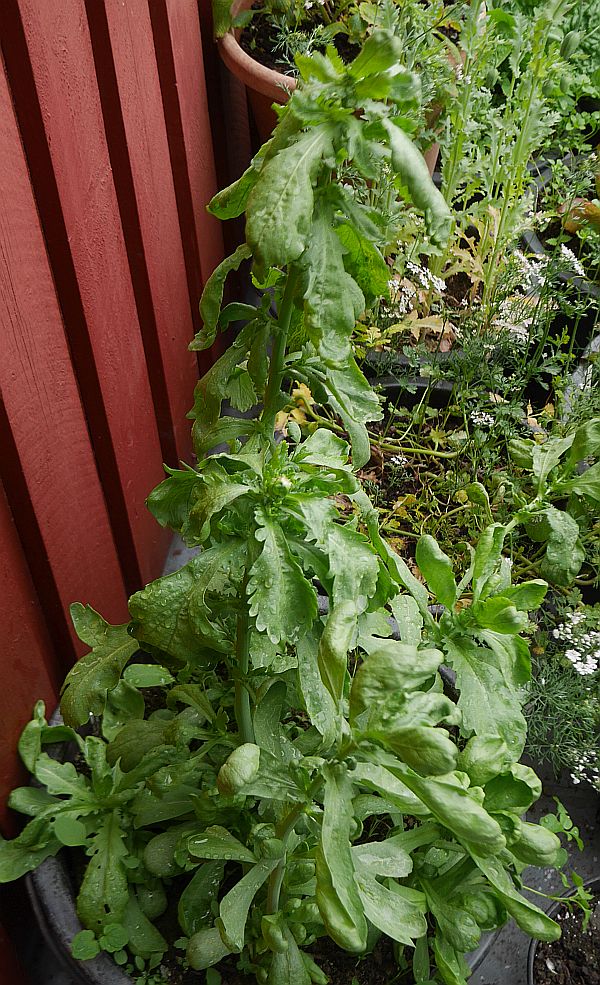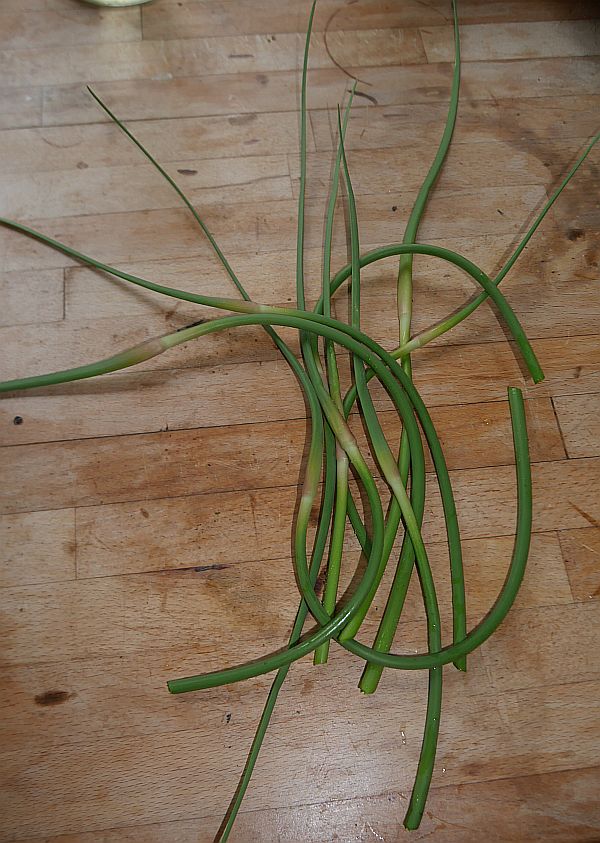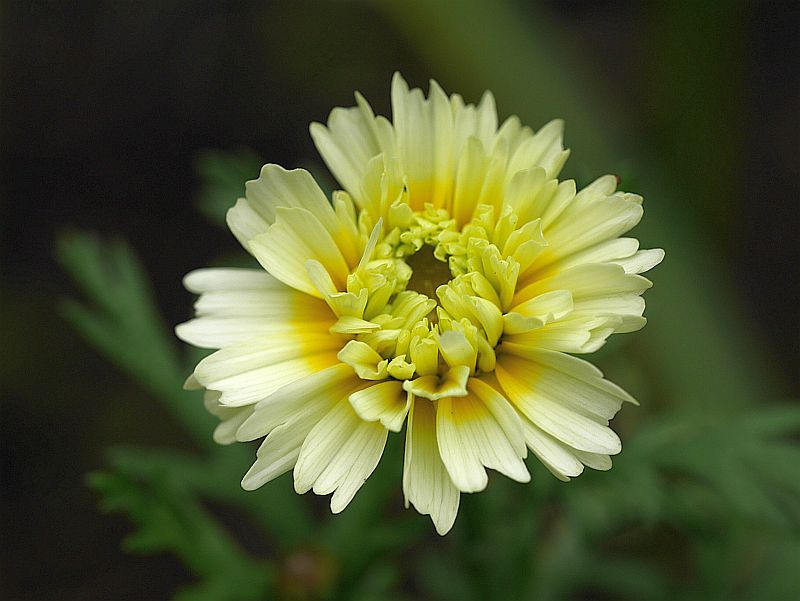When giving talks I like to renew myself and talk about something different each time. For my talk in Copenhagen at the Future Heirloom event last weekend I focussed during part of my presentation on edimentals in the Asteraceae or Compositae (the aster or daisy family / kurvplantefamilien). These are tbe edible perennial vegetables that are most obvious in the autumn garden and often underutilised by chefs in the west. Visiting the World Garden a few days before my talk on 17th October, I gathered flowers from all the flowering Asteraceae and here they are with names: Most are used for their tasty spring shoots and leaves, used cooked and raw, and most have a characteristic fragrant taste / aroma loved in the Far East (as also Chrysanthemum tea is popular and a refreshing accompaniment to spicy dishes). Aster scaber and Ligularia fischeri are nowadays both cultivated in a big way as “sannamul” in Korea and even exported to Korean markets around the world. Young shoots of other Aster sp. are foraged in Asia as is big-leaf Aster, Aster macrophyllus, in North America. Also from North America, cutleaf coneflower Rudbeckia laciniata or sochan was a popular vegetable for the Cherokee first people and in recent years has, maybe not unsurprisingly become a commercial vegetable in Korea. Annual shungiku or chopsuey greens Glebionis coronaria hails from the Mediterranean but is today an important vegetable in the Far East! Others currently in flower are best known as root crops, including (in the picture) Jerusalem artichoke (Helianthus tuberosus) and Dahlia. Yacon (Polymnia sonchifolia) is also autumn flowering but doesn’t manage to flower here (is moved indoors to flower and bulk up). The final flower in the picture is marigold Calendula officinalis, whose culinary use includes decorating and flavouring salads, soups and other dishes.
Most are used for their tasty spring shoots and leaves, used cooked and raw, and most have a characteristic fragrant taste / aroma loved in the Far East (as also Chrysanthemum tea is popular and a refreshing accompaniment to spicy dishes). Aster scaber and Ligularia fischeri are nowadays both cultivated in a big way as “sannamul” in Korea and even exported to Korean markets around the world. Young shoots of other Aster sp. are foraged in Asia as is big-leaf Aster, Aster macrophyllus, in North America. Also from North America, cutleaf coneflower Rudbeckia laciniata or sochan was a popular vegetable for the Cherokee first people and in recent years has, maybe not unsurprisingly become a commercial vegetable in Korea. Annual shungiku or chopsuey greens Glebionis coronaria hails from the Mediterranean but is today an important vegetable in the Far East! Others currently in flower are best known as root crops, including (in the picture) Jerusalem artichoke (Helianthus tuberosus) and Dahlia. Yacon (Polymnia sonchifolia) is also autumn flowering but doesn’t manage to flower here (is moved indoors to flower and bulk up). The final flower in the picture is marigold Calendula officinalis, whose culinary use includes decorating and flavouring salads, soups and other dishes.
Late flowering also means that the Asteraceae are also particularly important for a range of insect pollinators like hoverflies, drone flies and bees as can be seen in the pictures below, all taken in the World Garden:
Tag Archives: Shungiku
The Balcony in the rain
Wonderful rain on the balcony (aka zone 0.5) with oca (Oxalis tuberosa), 9 varieties of lettuce (salat), tomato “42 days” , dill, coriander, toothache pant (Spilanthes), shungiku / kronkrage and lots of celery (around the corner). The large bucket in the corner contains burdock providing seed fot goldfinches (stillits) and greenfinches (grønnfink) in winter (a living bird feeder!)
October Salad
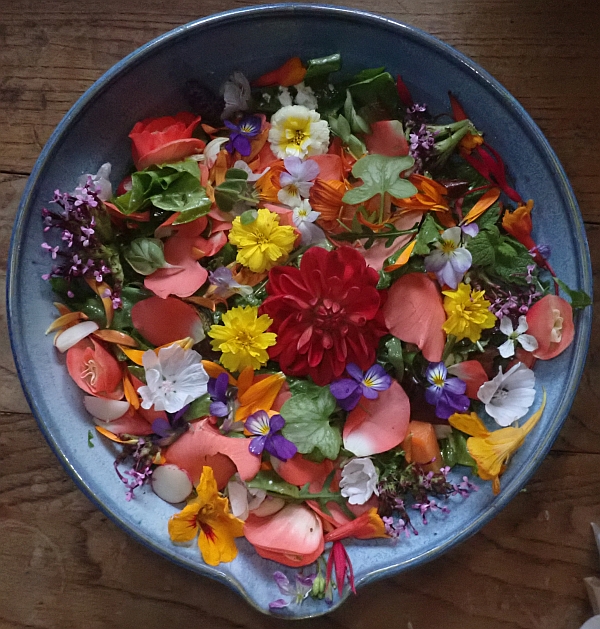
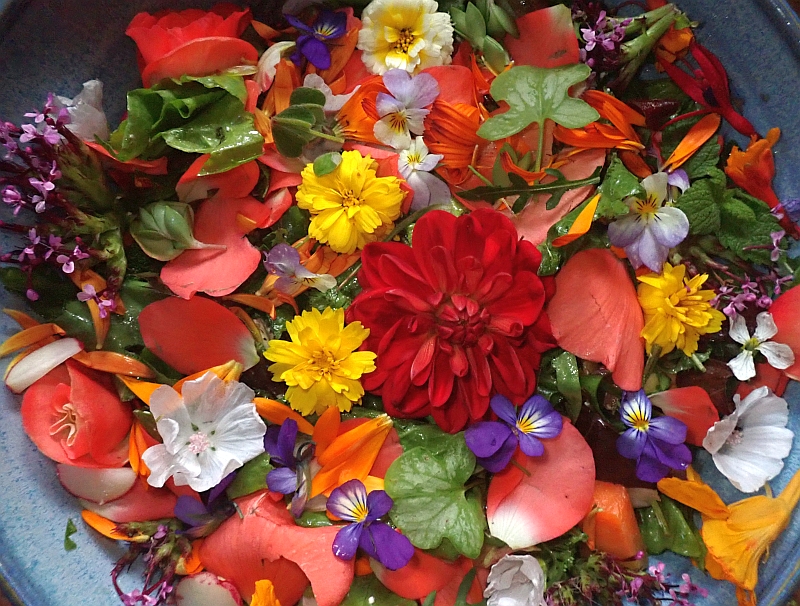
Mallows in season #2
…and my second best mallow is the hollyhock mallow or greater musk mallow / rosekattost (Malva alcea), hardy and reliably perennial, here with perennial kale “Daubenton”, flower buds and stems of Scorzonera hispanica, Johannes’ shallot (Allium x cornutum; see https://www.edimentals.com/blog/?p=22601) and annual chopsuey greens or shungiku (Glebionis coronaria, formerly Chrysanthemum coronarium).
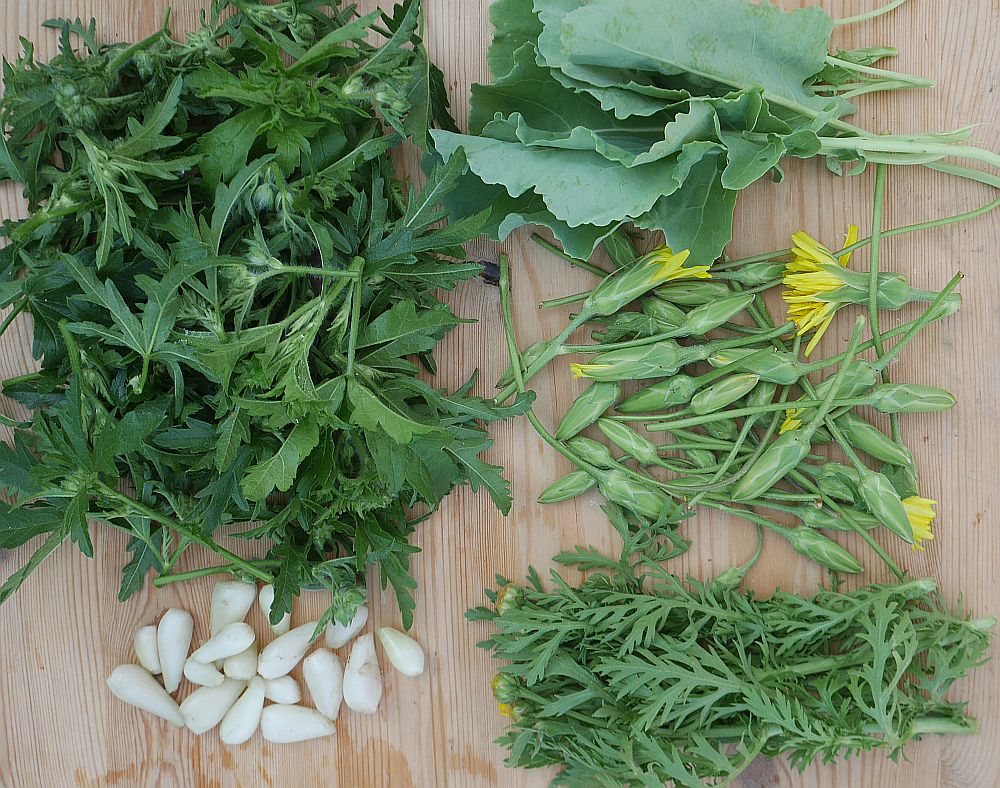
Shungiku Soba
This year, I started seed very early indoors and plants have for the first time been quite productive. Last night I made a soba (buckwheat pasta dish) with stir fried chopsuey greens and garlic scapes (with white wine, ginger, chili and soy sauce as flavourings). Chopsuey greens have a similar “aromatic” taste common to many other Asteraceae, including perennials like Aster scaber, Aster tripolium and Ligularia fischeri. Try substituting these perennials in chopsuey greens recipes.
I wrote an article about shungiku in the Norwegian herb magazine Grobladet, see
At the time, I couldn’t find much evidence of this plant having been used traditionally in the Mediterranean countries. However, thanks to the many ethnobotanical studies over recent years to document the Mediterranean diet, it has now been registered as eaten both raw and cooked both in Spain, Italy (including Sicily) , in a number of studies in Turkey as well as Palestine and Morocco. It is also sometimes cultivated.
More specifically, leaves and young shoots are used in the Mediterranean countries in salad (both raw and cooked), in pies, as a cooked vegetable, in a Turkish dish unlama (flour, garlic and lemon juice) and in Moroccan bakoula salad, usually made with mallow leaves, but spinach and /or kale are substituted for them (see, for example, http://www.mymoroccanfood.com/home/bakoula-with-spinach-and-kale)
From Malta to Japan and back again
Grobladet was the magazine of Oikos, Norway’s biggest organic organisation.






















